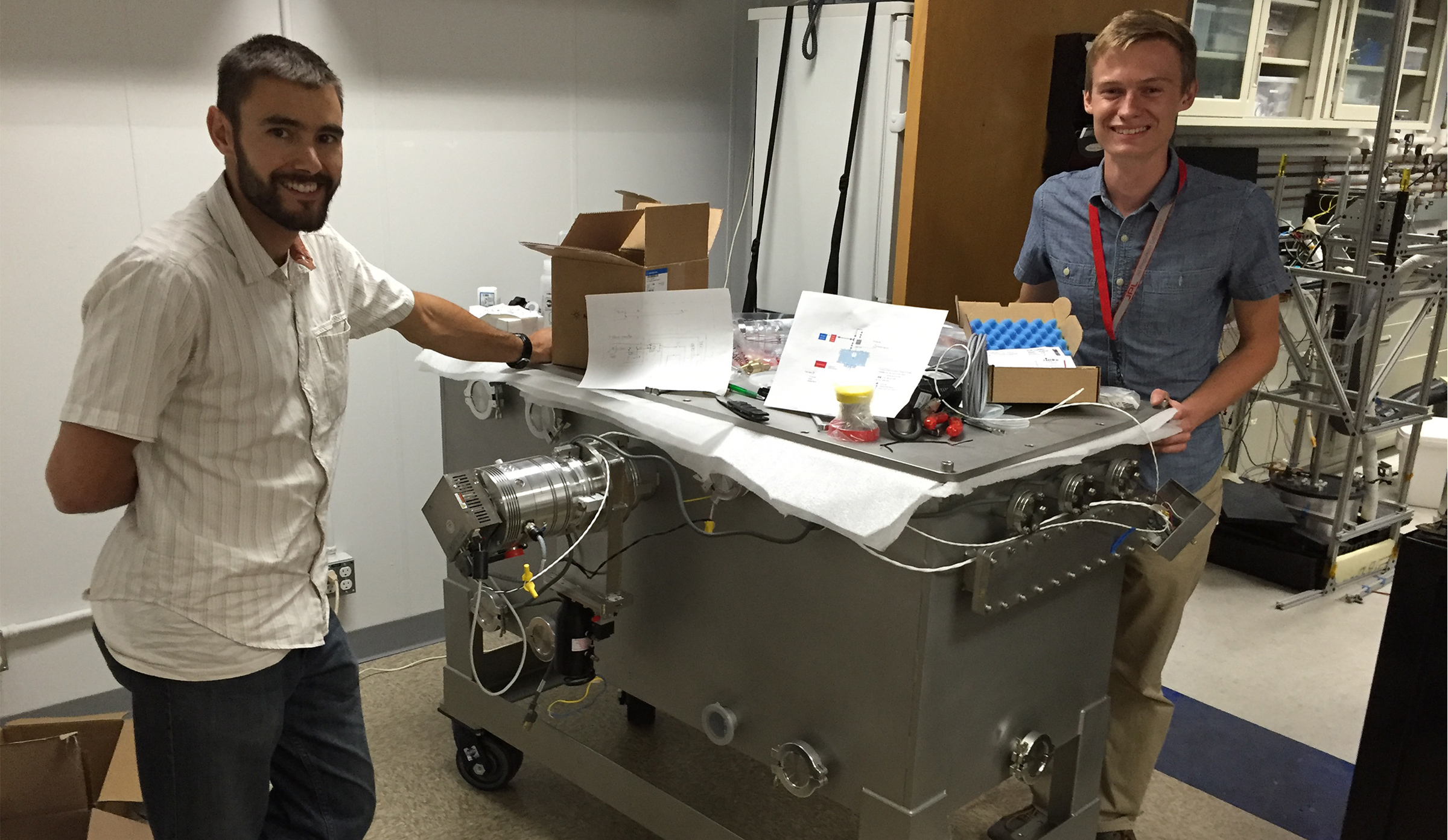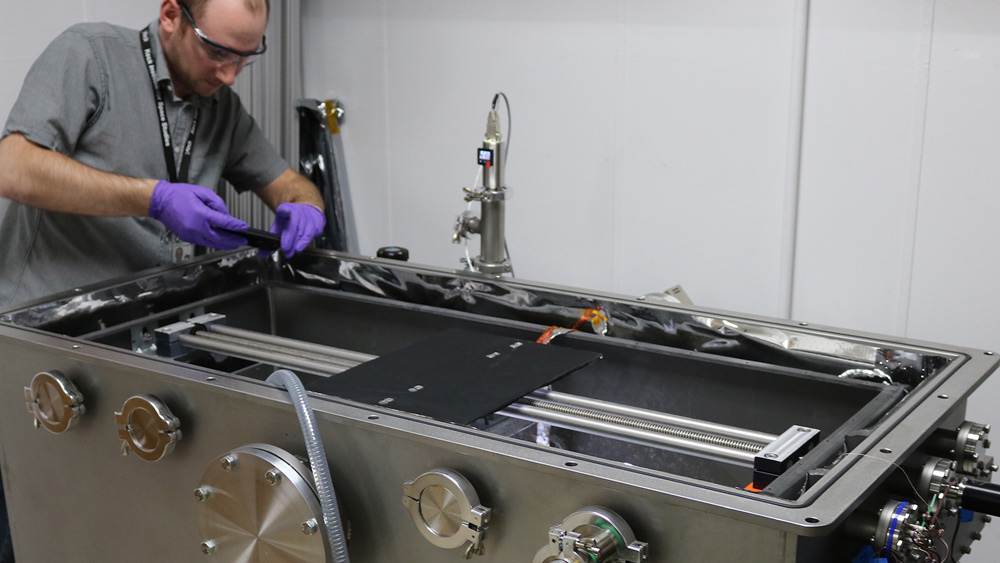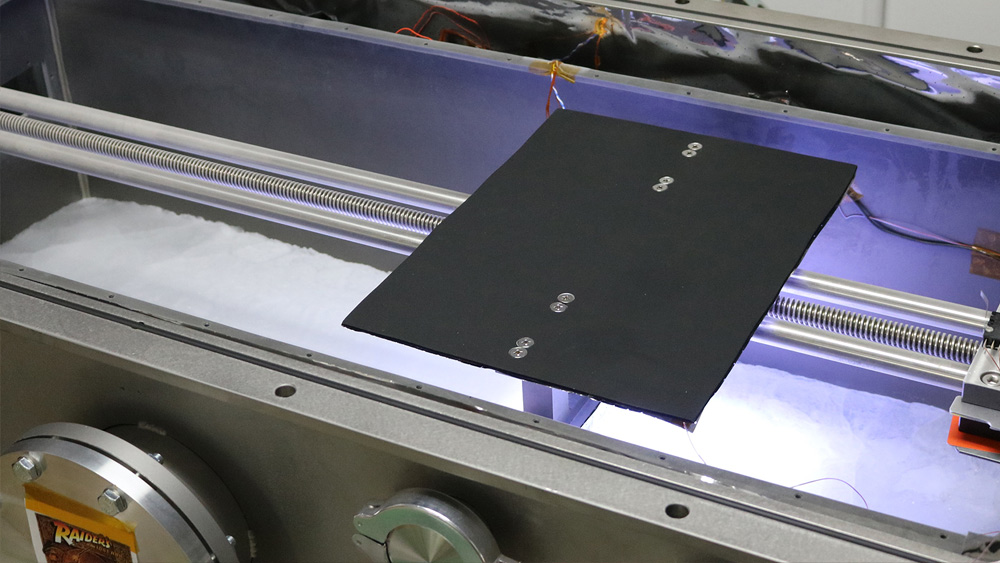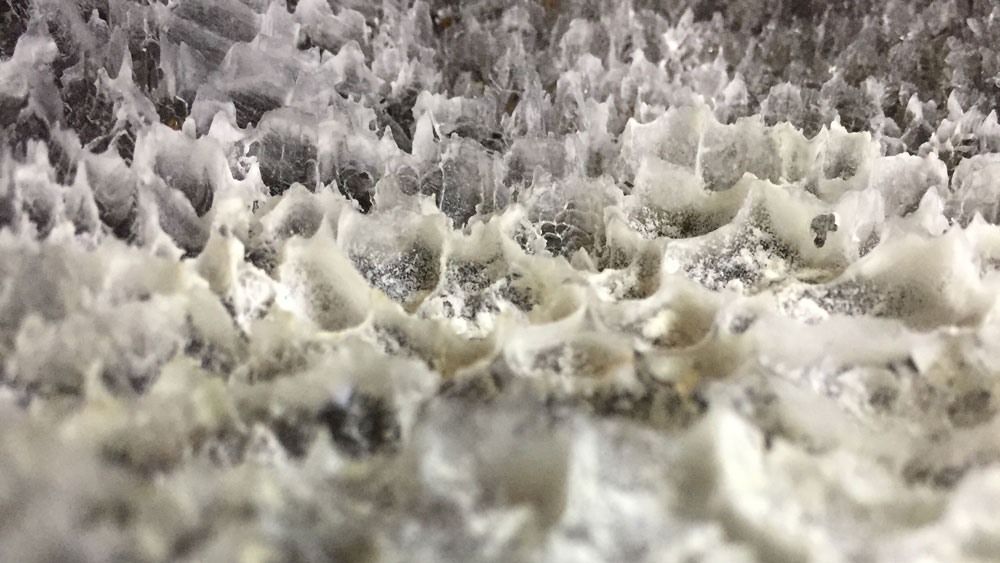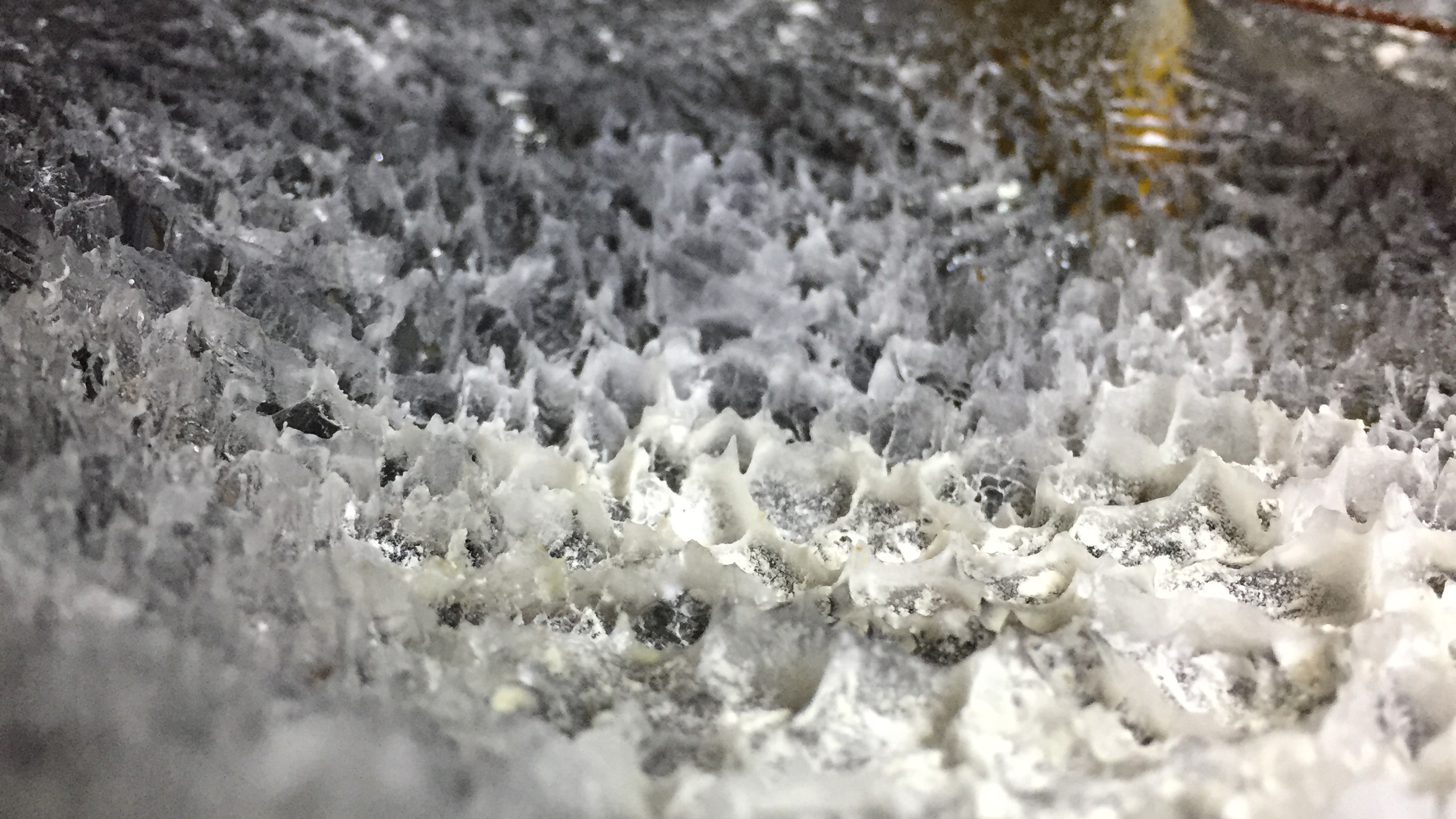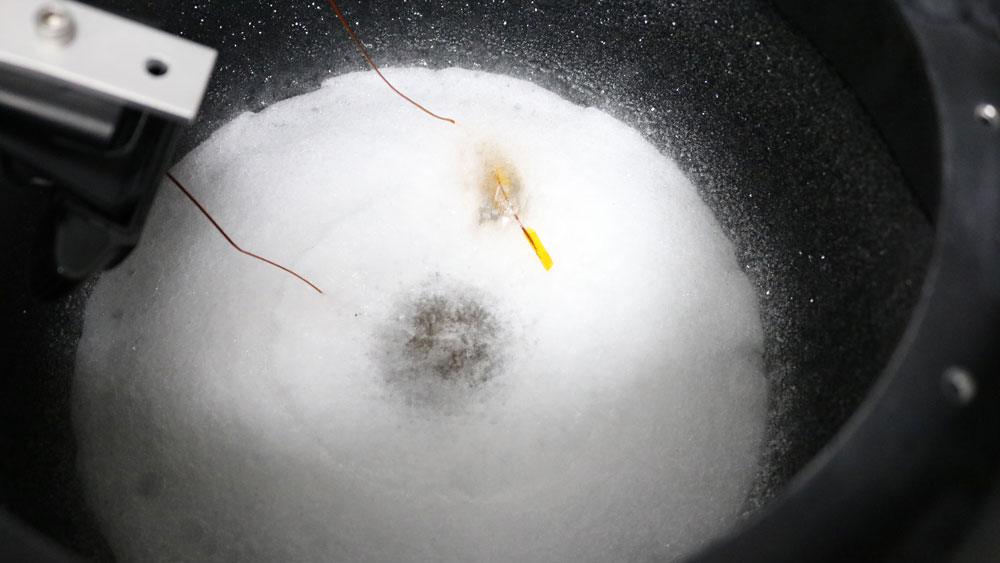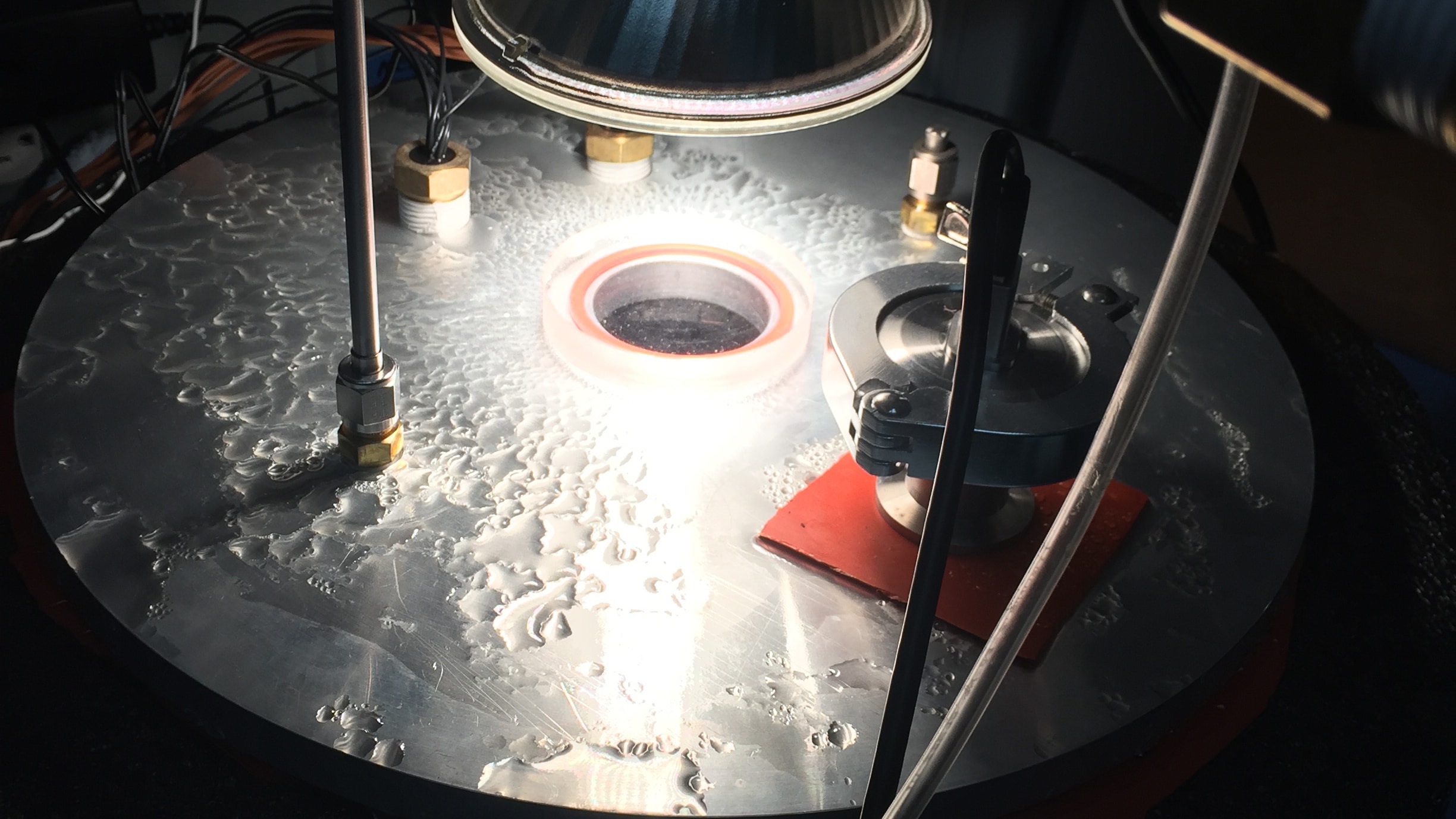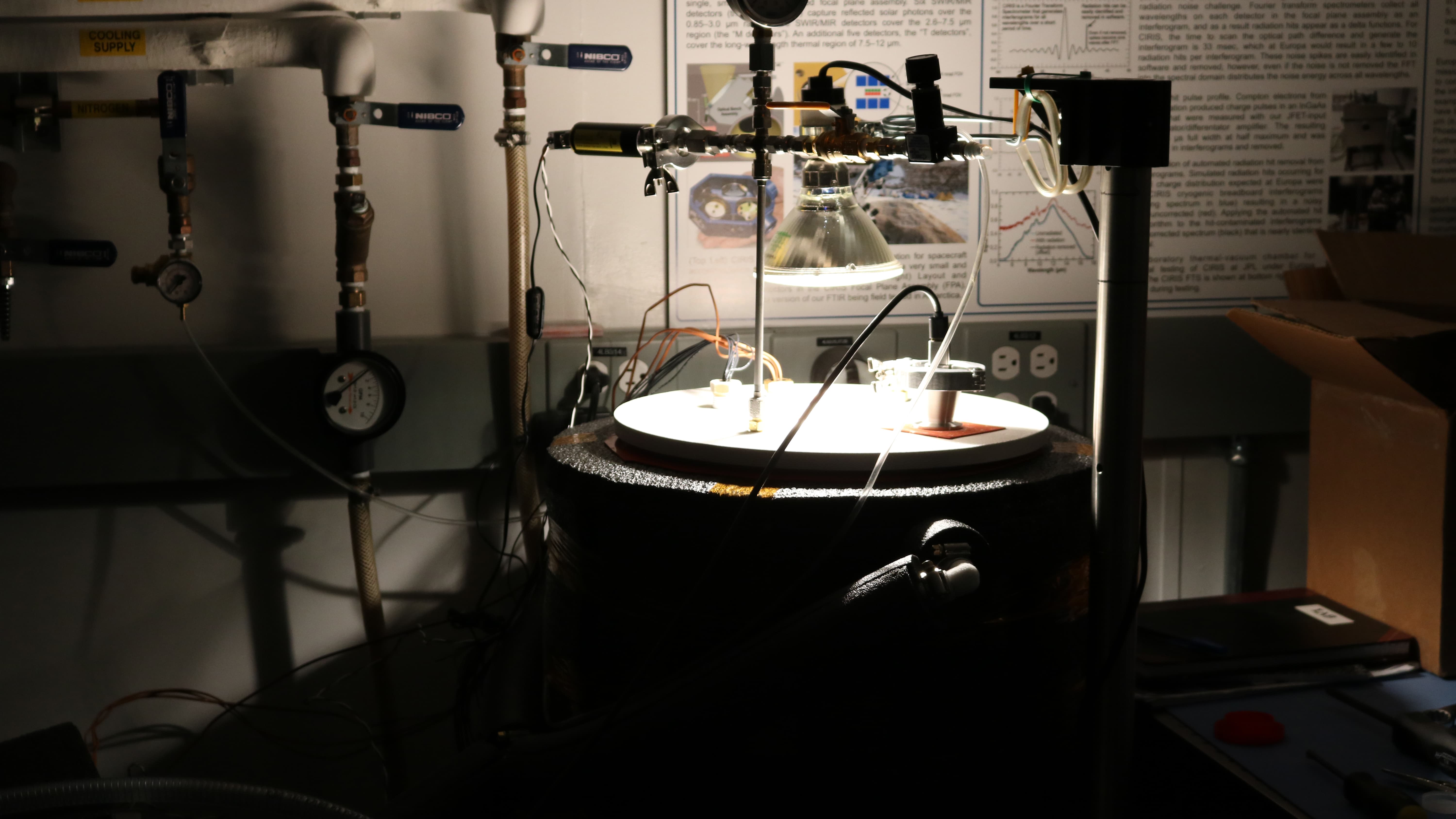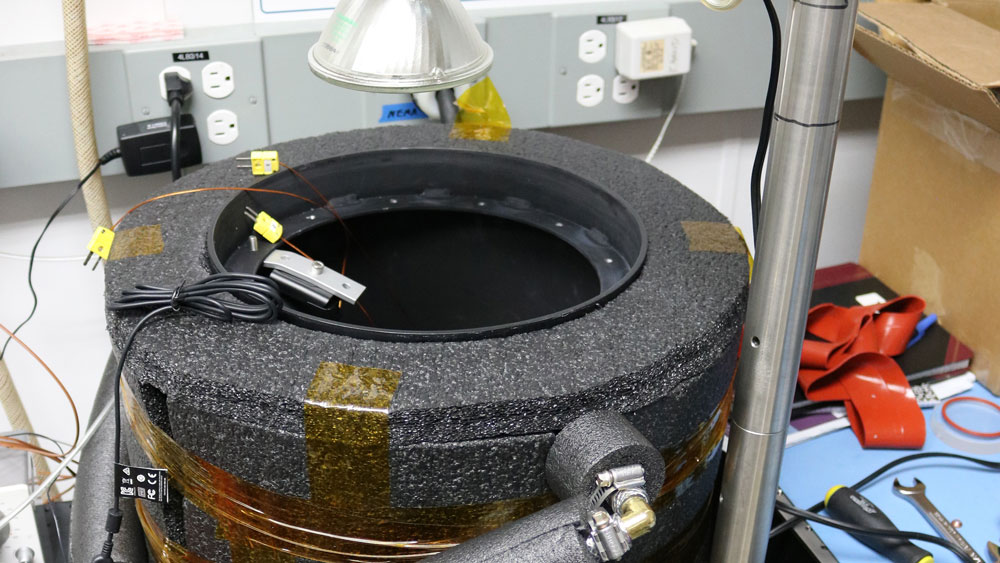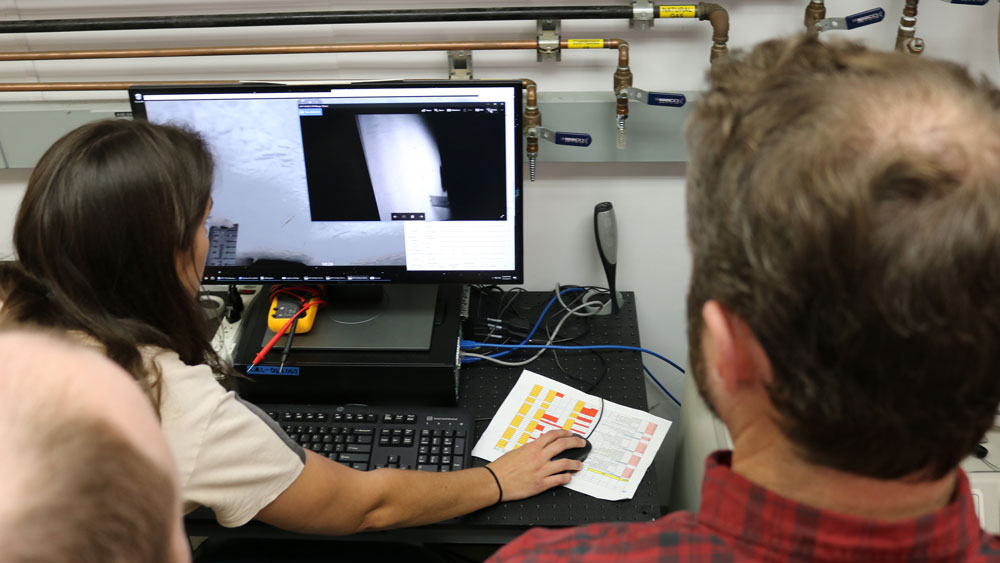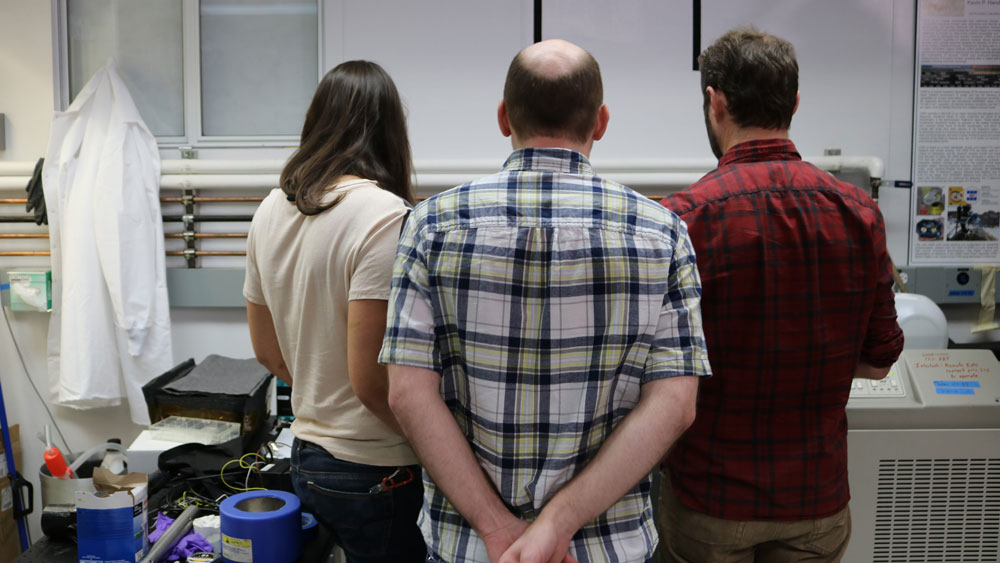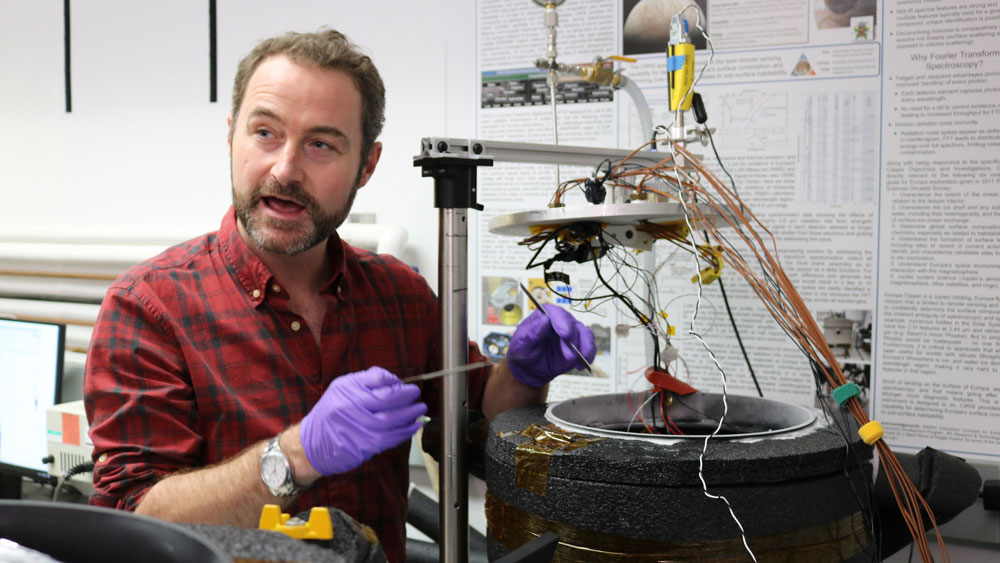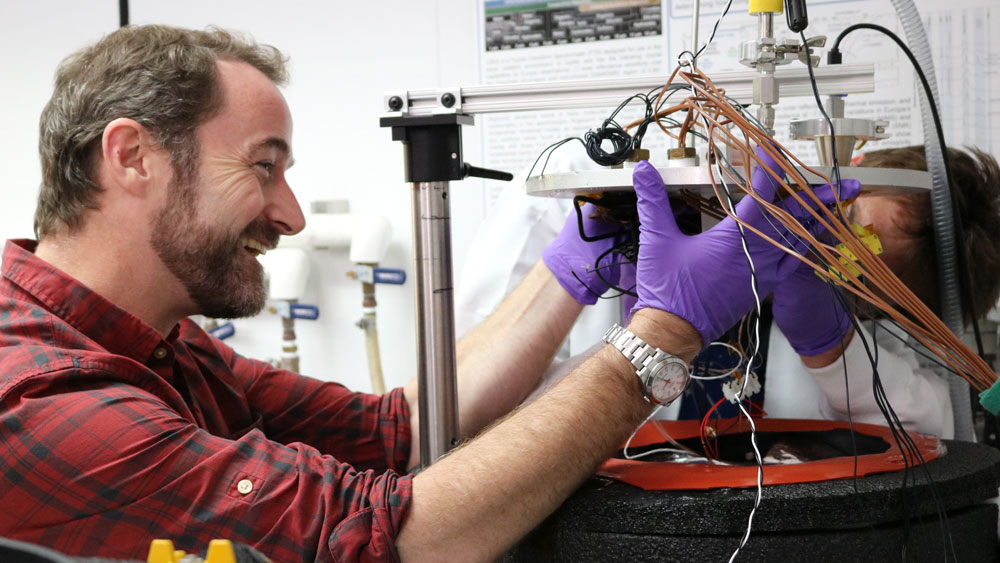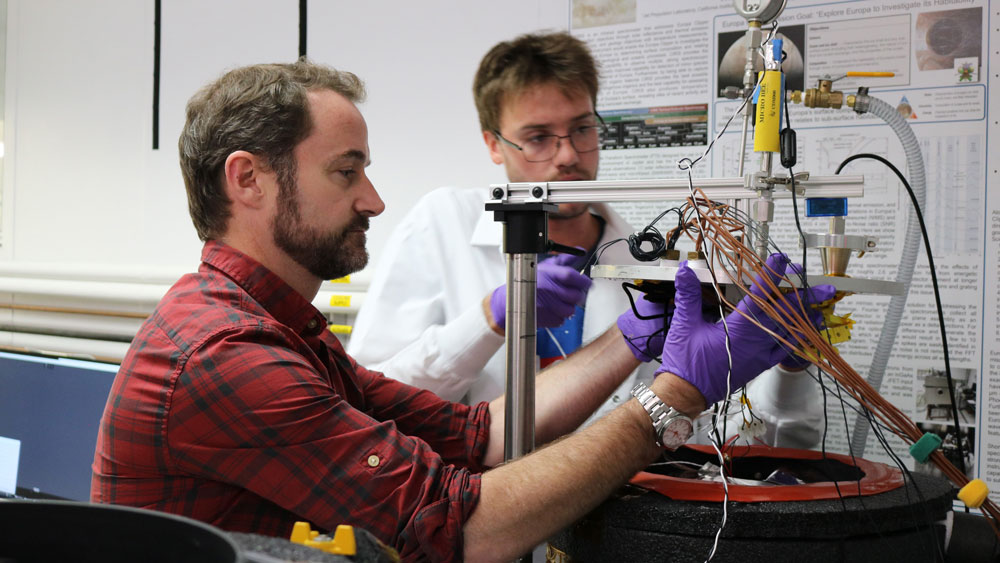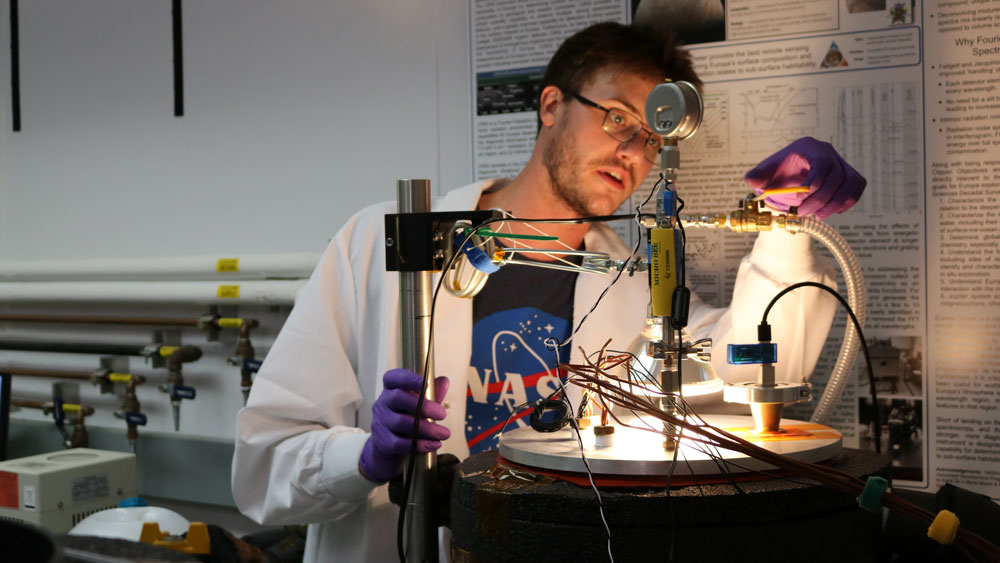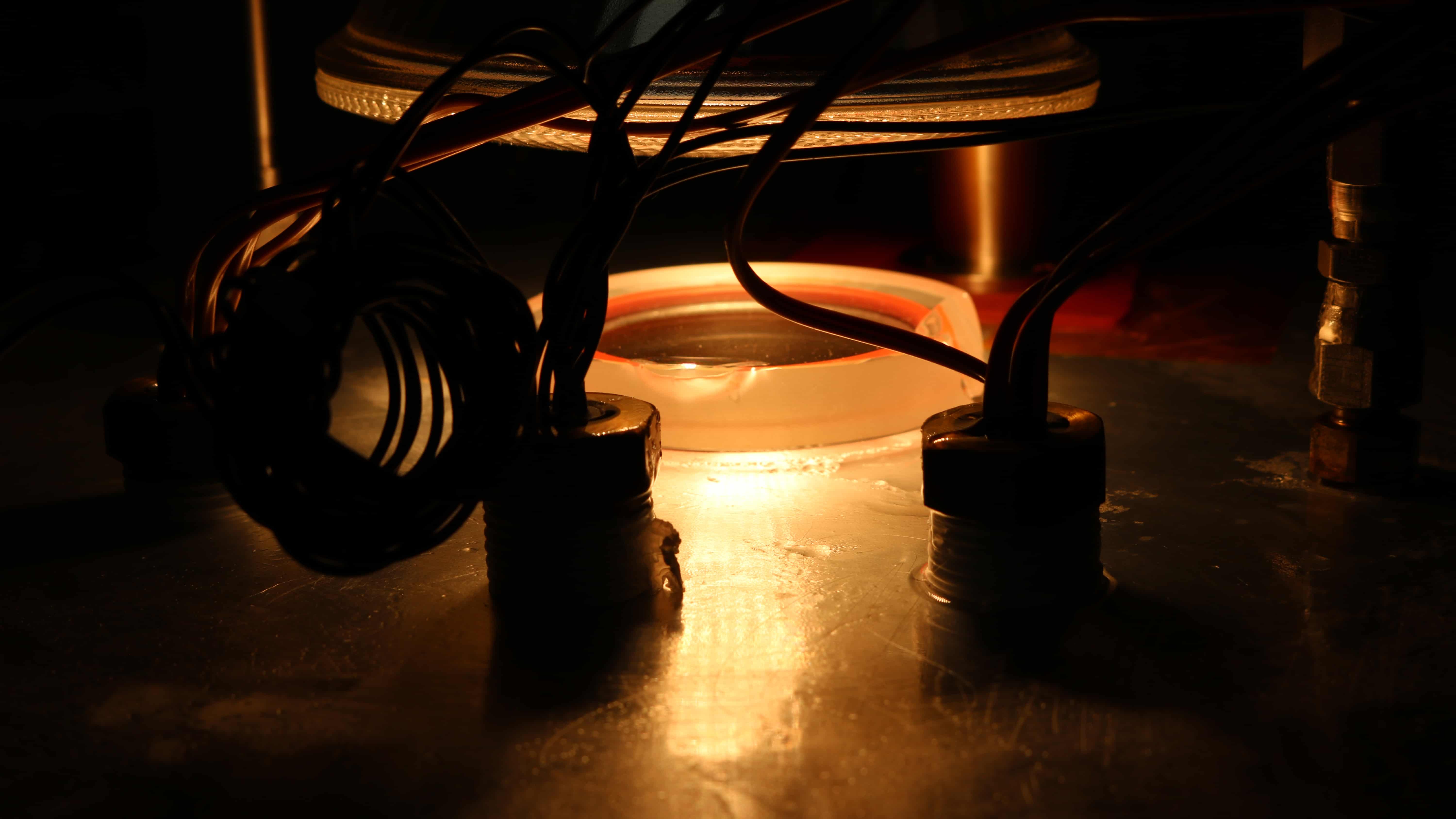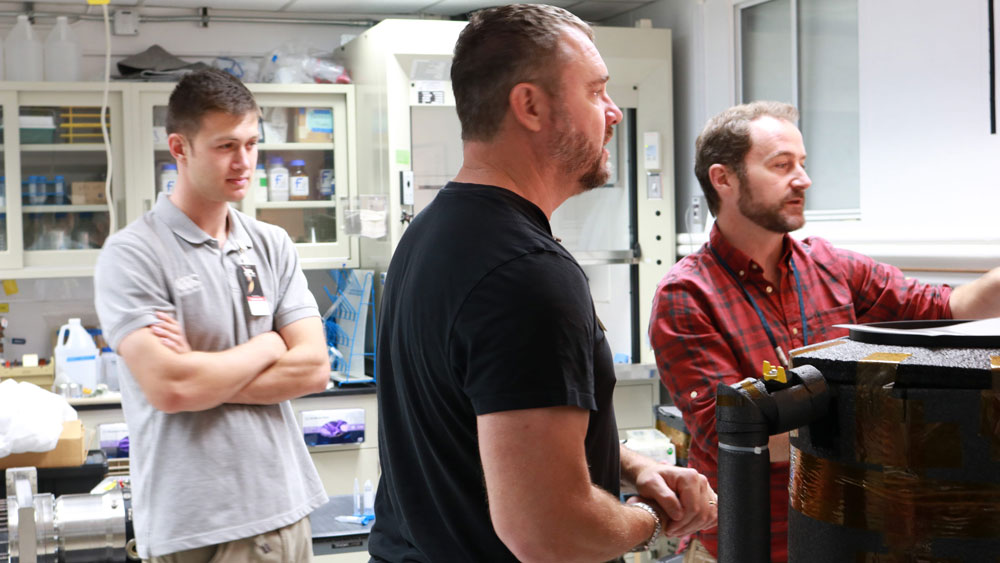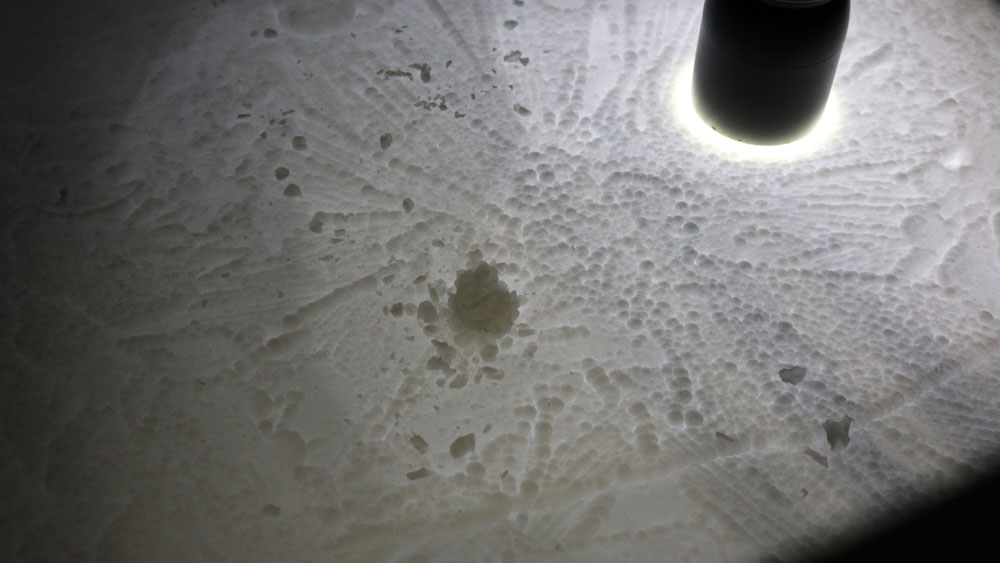Ocean Worlds Lab Research
At least six moons of the outer solar system may harbor subsurface liquid water oceans. These 'ocean worlds' include Jupiter's Europa, Ganymede, and Callisto; Saturn's Enceladus and Titan; and possibly even Neptune's curious moon Triton. The Ocean Worlds of our Solar System, Earth included, cover a wide range of physical and chemical parameters that affect both habitability and the prospects for an independent origin of life. From the Hadal depths (>6 km) of our ocean here on Earth to the cold, irradiated surface of Europa our team works to better understand how the physical and chemical conditions on and within worlds combine to form potentially habitable environments.
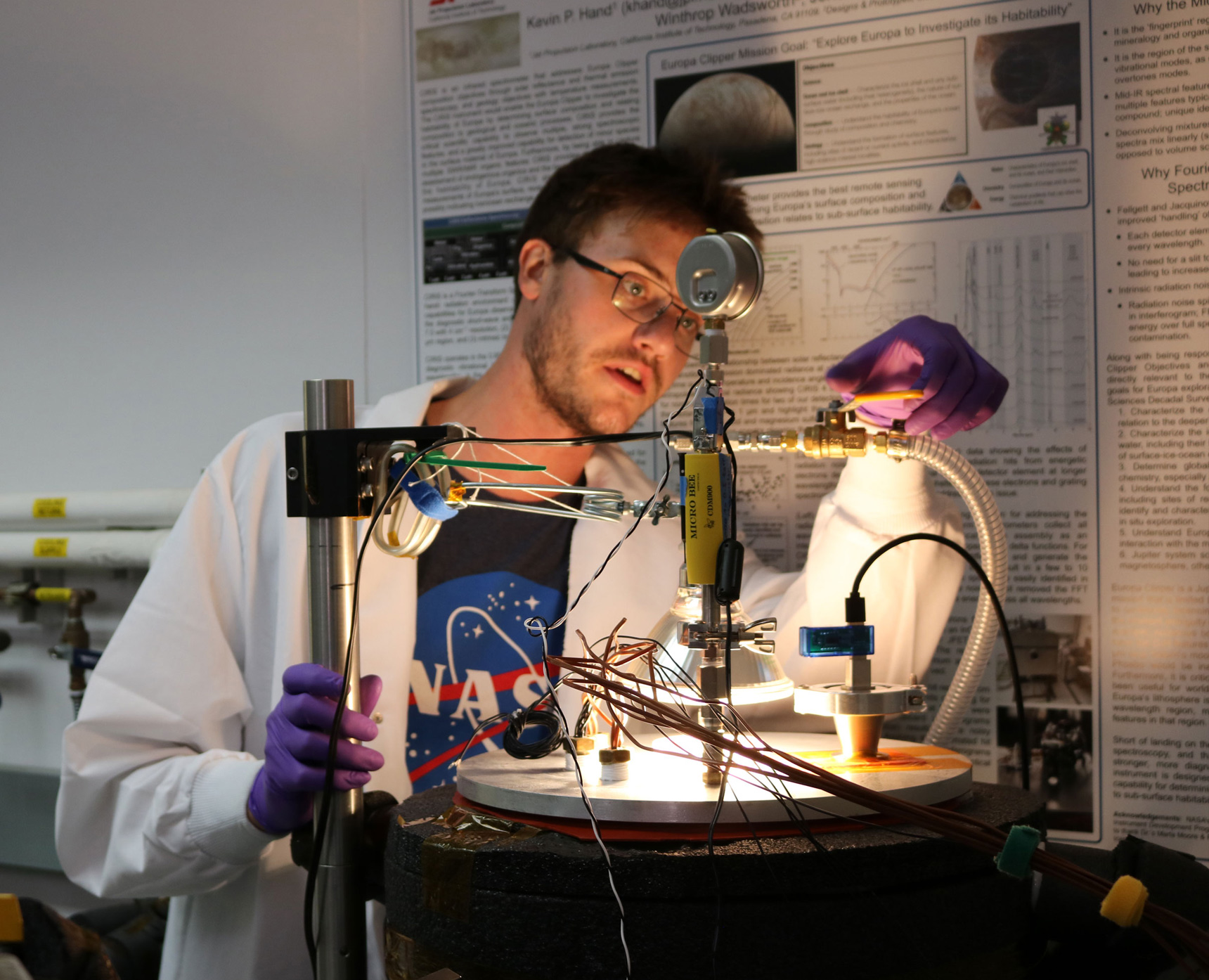
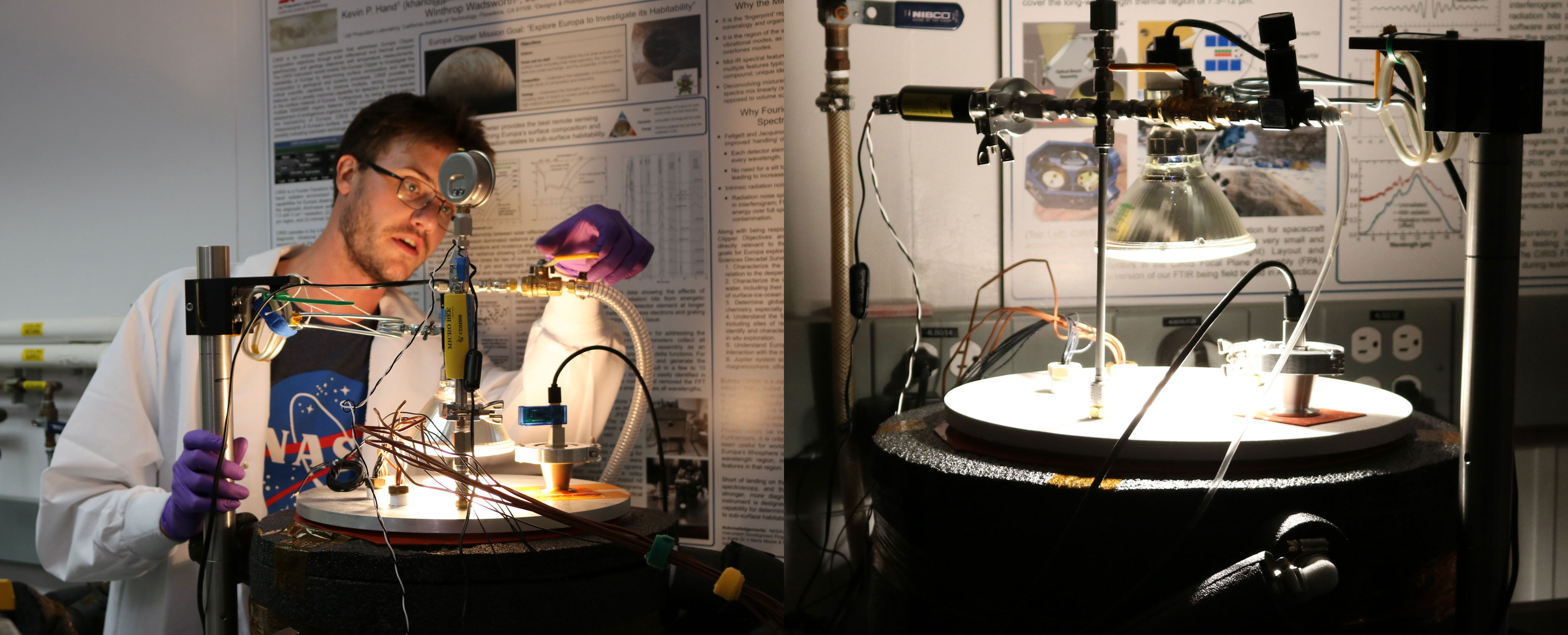
In our lab we recreate the conditions found on, and within, ocean worlds. We focus on replicating the low temperatures, low pressures, and radiation conditions found on the surfaces of Europa and Enceladus. Our chambers vary in size and capability, and can replicate icy materials from the micro- to macro-scale. In most cases, we work to collect visible to mid-infrared spectra and mass spectra of the ice mixtures we create. The results of our experiments are then used to better understand data collected from spacecraft missions, and to inform missions yet to come. See our Publications Page for the latest published research.
A few of our key chambers are shown in the gallery below, including our Minos chamber (a.k.a., 'Europa in a Can' [or 'Enceladus in the Can', depending on the experiment]), our Stockpot 'rapid-prototyping' chambers, and our beloved 'Ark of Europa' chamber, so named because it resembles the Ark in Indiana Jones and the Raiders of the Lost Ark.
